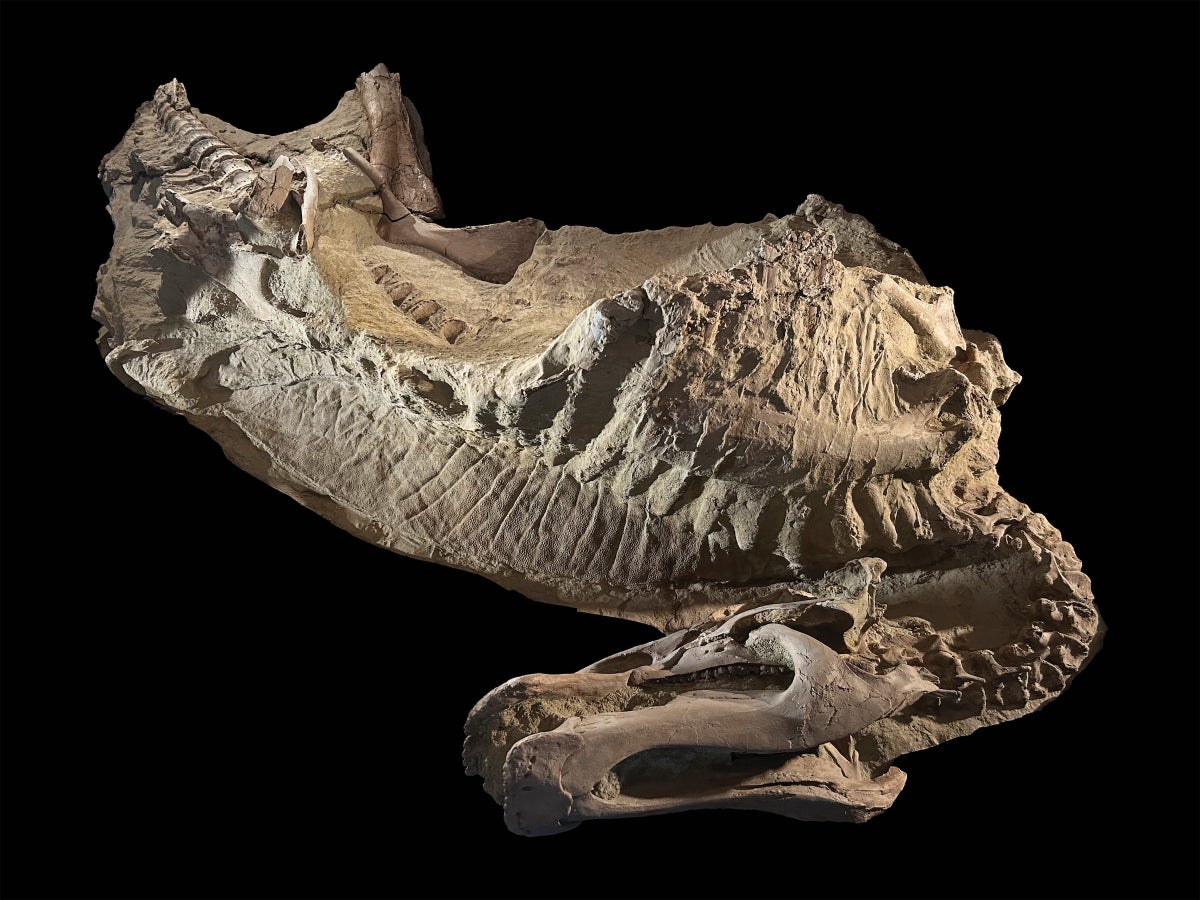Duck-Billed Dinosaur Mummies Are Clay Molds Formed by Microbes, Scientists Say
3 minute readPublished: Thursday, October 23, 2025 at 7:15 pm

Dinosaur Mummies: A New Look at Ancient Preservation
Scientists have made a groundbreaking discovery regarding the preservation of duck-billed dinosaur mummies, challenging previous assumptions about their formation. A new study, published in *Science*, reveals that the "skin" found on these Edmontosaurus fossils, unearthed in the Lance Formation of eastern Wyoming, isn't fossilized flesh at all. Instead, it's a clay mold created by microbial activity during the creatures' decay.
The research, led by paleontologist Paul Sereno, indicates that the process began with the dinosaurs' carcasses desiccating during a drought. Subsequently, a flood likely buried them in sediment. A layer of bacteria formed a biofilm on the wet surfaces, attracting clay particles. As the soft tissues decayed and were washed away, the clay mold preserved the shape of the dinosaur's exterior.
This clay molding process, previously known to preserve soft-bodied animals in oxygen-poor environments, was unexpectedly found to have worked on these dinosaurs, which were buried in a relatively oxygen-rich environment. The study examined several specimens, including two new Edmontosaurus annectens, a Triceratops horridus, and a Tyrannosaurus rex, all found within a 10-kilometer radius. The newly discovered Edmontosaurus specimens, nicknamed Ed, Jr. and Ed, Sr., provided unique insights. Ed, Jr., a late juvenile, is the first adolescent dinosaur mummy ever found with a fully preserved fleshy outline of its trunk. Ed, Sr., an early adult, is the first of its kind to have a full set of tail spikes and the earliest known hooves of any four-footed animal.
Researchers employed advanced techniques, including x-rays, CT scans, and microscopic and chemical analyses, to confirm the clay mold hypothesis. This discovery raises questions about the preservation of other dinosaur mummies and skin renderings found globally.
BNN's Perspective: This research offers a fascinating glimpse into the complex processes of fossilization and highlights the importance of ongoing scientific inquiry. While the findings may alter our understanding of dinosaur mummies, they underscore the remarkable ways nature can preserve the past. The study's focus on the "how" of fossilization, rather than just the "what," is a welcome development in paleontology.
Keywords: dinosaur mummies, Edmontosaurus, fossilization, clay molds, microbes, paleontology, Wyoming, Lance Formation, Paul Sereno, soft tissue preservation, Ed, Jr., Ed, Sr., Triceratops, Tyrannosaurus rex, dinosaur fossils, science.